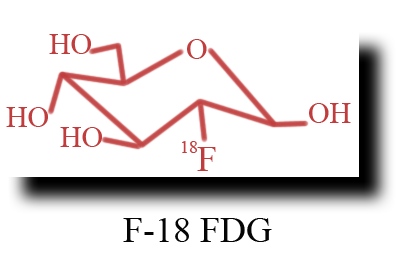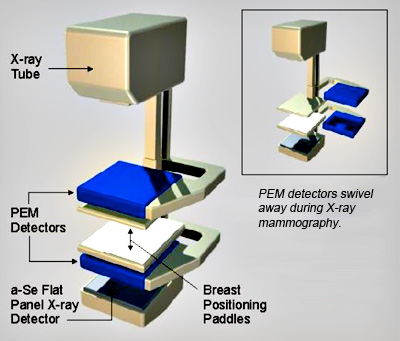How does positron emission mammography work?
1 Answer
Positron Emission Mammography (PEM) is works on the basis that cancer cells show an increased usage of glucose.
A PEM scanner is basically a miniature X-Ray machine and PET scanner.
The X-Ray machine gives an image of the breast, and the scanner overlays this image with the "hot spots" locating the disease sites.
Isotopes like F-18 are positron emitters. Substances containing these isotopes collect in disease sites in the body.
The patient receives a solution of

When the F-18 decays, it emits a positron and a neutrino.

The positron soon meets an electron in the tissue.
They annihilate each other, producing two antiparallel 511 keV γ-rays.

PEM uses a pair of detectors placed above and below the breast and "mild" breast compression to detect these γ-rays
The signals are amplified, and a computer uses these to generate images of thin slices through the breast.
The images are then overlaid with an ordinary X-ray image.

The bright spots indicate the cancerous areas.

